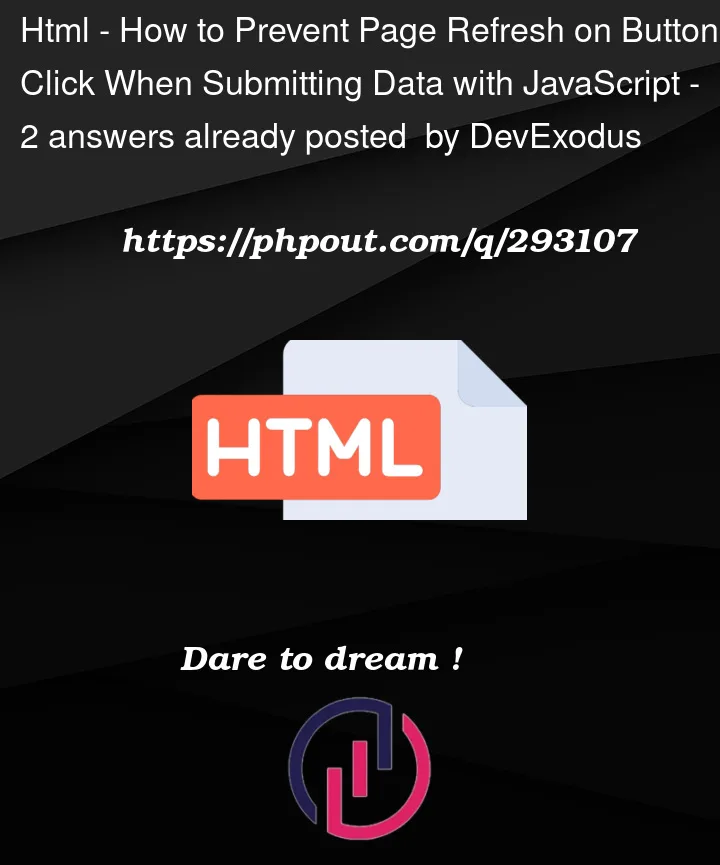I am working on a web application where a button click triggers an async function to submit data. However, the page refreshes every time I click the button, even though I have used e.preventDefault(). Below is a minimal representation of my code.
JavaScript Code:
document.addEventListener('DOMContentLoaded', () => {
const downloadButton = document.getElementById('downloadButton');
downloadButton.addEventListener('click', e => download(e));
});
async function download(e) {
e.preventDefault(); // Prevent default button click action
const videoUrl = document.getElementById('videoUrl').value;
console.log('Downloading video from:', videoUrl);
HTML Snippet:
<!DOCTYPE html>
<html lang="en">
<head>
<meta charset="UTF-8">
<title>Button Click Test</title>
</head>
<body>
<input id="videoUrl" type="text" placeholder="Enter Video URL">
<button type="button" id="downloadButton">Download</button>
<script src="script.js"></script>
</body>
</html>
Issue:
When the button is clicked, the page still refreshes despite using e.preventDefault() in the download function. The expected behavior is for the page to not refresh and for the data to be sent to the server asynchronously.
Attempts to Resolve:
- Ensured
e.preventDefault()is used in the event handler. - Verified that the button type is
"button"to prevent default form submission. - Checked for JavaScript errors in the console (none found).
- Ensured the event object
eis passed correctly to thedownloadfunction.
Question:
What could be causing the page to refresh even after using e.preventDefault()? Is there a part of my setup or code that I might be overlooking?
Additional Context:
- I’m testing this in modern browsers (Chrome, Firefox).
- The script is included correctly in the HTML and is executed after the DOM is fully loaded.




2
Answers
You have to check you server configurations. If you tried the code below, you will see that it works just fine:
If we came to the logic, you didn’t even add a form. That is, deleting the
e.preventDefault()function won’t make a difference. Things are not being submitted at all, so the problem is 99% in the backend configurations. Check it out!You have to add a
formbehind Without action property and then after endingformyou should add the<button>.If you want to access you could easily access the input with
document.getElementById('youInputName'), or … .